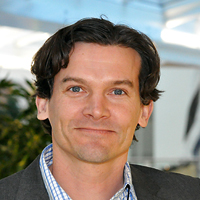
Turbine installation at Roan wind farm in May 2018.
Construction: Wind power wins on price
The cost of building wind farms is now lower than for building new gas, coal or nuclear energy plants. That is good news for the global climate.
"The cost of building new wind farms has gradually decreased in recent years, and in the past year alone costs have fallen dramatically," says Bjørn Mo Østgren, who is responsible for monitoring Statkraft's wind farms in Northwestern Europe.
"Wind farm production costs have fallen so dramatically in many parts of the world that building costs are more affordable for new wind farms than for new gas or coal-fired plants – even without subsidies. Onshore wind farms are now the cheapest alternative for developing new methods of electricity production."
Østgren believes the dramatic cost reductions will lead to a building boom in the wind power sector in many countries. Wind will predominantly replace coal, which is good news for the transition to a carbon-free society.

Technological development
There are several reasons why wind power has become more affordable, and technological development is undoubtedly one of them.
"We now have bigger, more effective and more robust turbines that produce more power and require less maintenance," says Østgren.
"The key driver of the technological development has been a tendering system based on auctions. Under this system the developer offering production with the lowest subsidy requirements wins the contract. This has led to substantial cost reductions in an industry which previously was used to relatively high subsidies."

More effective development
As well as the turbine manufacturers' improved ability to produce increasingly effective, robust and affordable turbines, wind power developers like Statkraft have become more experienced and effective at implementing their projects.
"Practice makes perfect. We now have an effective set-up in place for building wind farms," says Østgren.
"We are making fewer errors, achieving higher quality at every step, and cooperating better with our subcontractors. We are also forming more effective contracts for cables, roads and other infrastructure. All these factors are pushing project costs down."
Strategic growth area
Statkraft's core business has always been hydropower, even though the company opened its first wind farm in Smøla in 2002. Now, as Statkraft firmly positions itself as a producer of renewable energy in a broader sense, development of solar and wind power plants is becoming an increasingly important priority area.
"Both solar and wind power are strategic growth areas for Statkraft," says Østgren. "Initially we will likely invest most in Europe, where countries such as Sweden, Norway, the UK and Ireland stand out as promising markets for wind power. In the next phase we may invest in other parts of the world, and perhaps particularly in countries where we already have a presence. In Brazil, for example, Statkraft already has several hydropower projects as well as a wind farm."
Tough market
Østgren concedes that the competition to develop wind power projects is tough, but that Statkraft has excellent prerequisites to measure up:
"It's about finding the best sites for building the farms, and about designing effective processes in cooperation with the site owners. The sooner we can enter the process, the better," he says.
"Statkraft is an experienced developer with the ability to implement projects on time and budget, and that is a prerequisite. Moreover, we have the meteorological expertise and close contact with turbine manufacturers needed to find optimal solutions."
What the industry is waiting for now is a minor revolution in battery storage."
"Batteries are already being used to some extent in wind farms, for example in the UK, but we are waiting for them to become both cheaper and better," says Østgren.
"When the world is given the possibility to store the electricity generated from sun and wind in more efficient and more affordable ways, we will see the next wave of major developments in the power production landscape."

Bjørn Mo Østgren
Bjørn Mo Østgren is vice president for the technical department in Offshore Wind in Statkraft.

Roan wind farm in Trøndelag County, with its 71 turbines and 256 MW power, was the largest in Norway when the building phase was completed. Roan is the first of the wind farms in Fosen Vind's portfolio.
More powerful turbines in Fosen
- The pace of technological development in wind power is now so fast that developers are opting to change their orders during projects. Fosen Vind will install new turbines more powerful than originally planned for three wind farms due for completion in 2020.
- The decision to develop the wind power project at Fosen was made in 2015, and when Roan wind farm was completed, it was installed with turbines with 3.6 MW capacity. Hitra 2 and Storheia will also be installed with this type of turbine. New and more effective turbines are now on the market, however, so the turbines installed at the wind farms in Harbaksfjellet, Kvenndalsfjellet and Geitfjellet will have a capacity of 4.2 MW. The total increase in power is as much as 56.4 MW, equivalent to the whole wind farm in Hitra.
- "More powerful turbines mean more energy production without creating additional negative impacts for the environment or society. We are therefore pleased to be able to do this in our latest wind farm projects," says Eivind Torblaa, Managing Director of Fosen Vind.